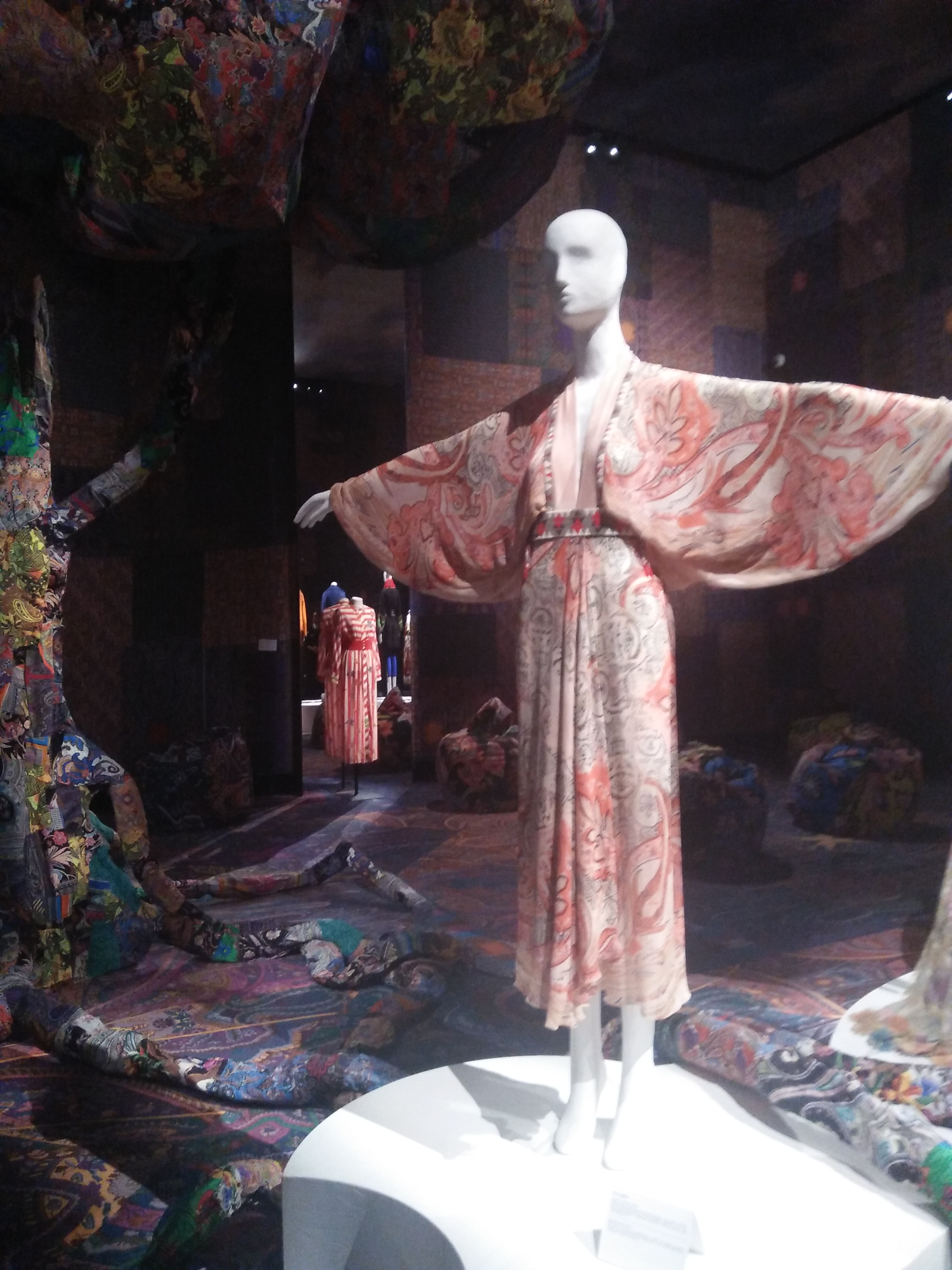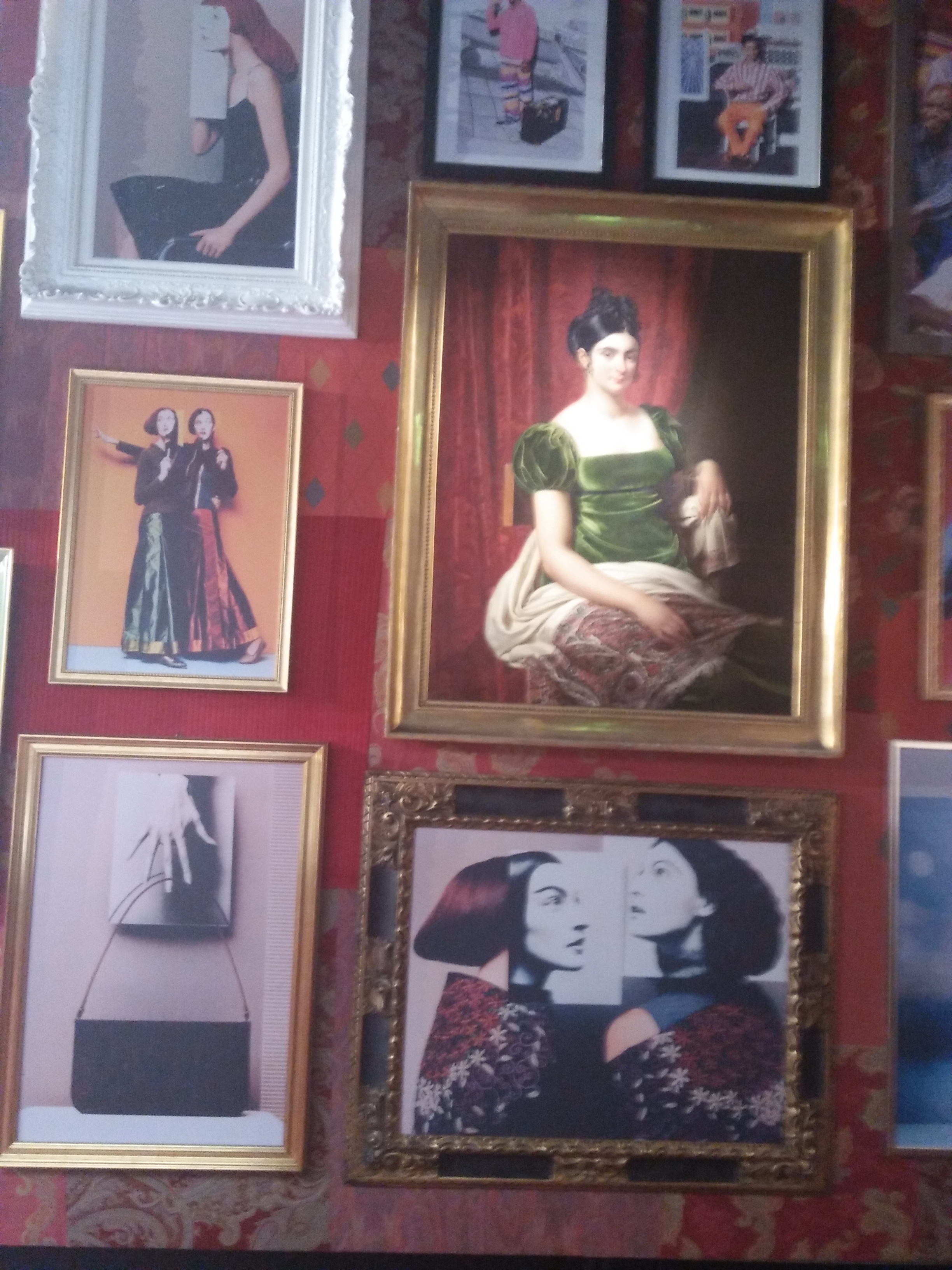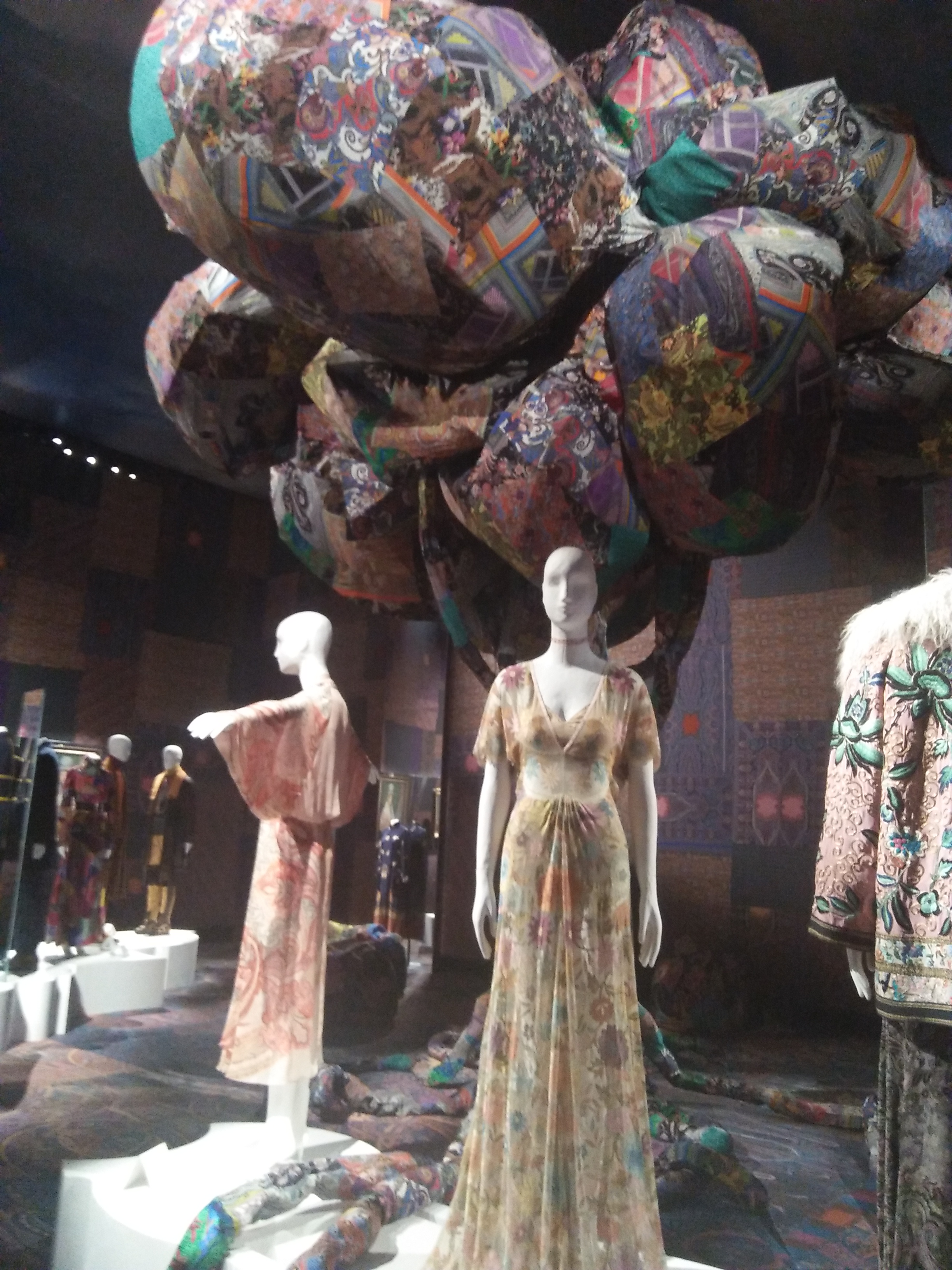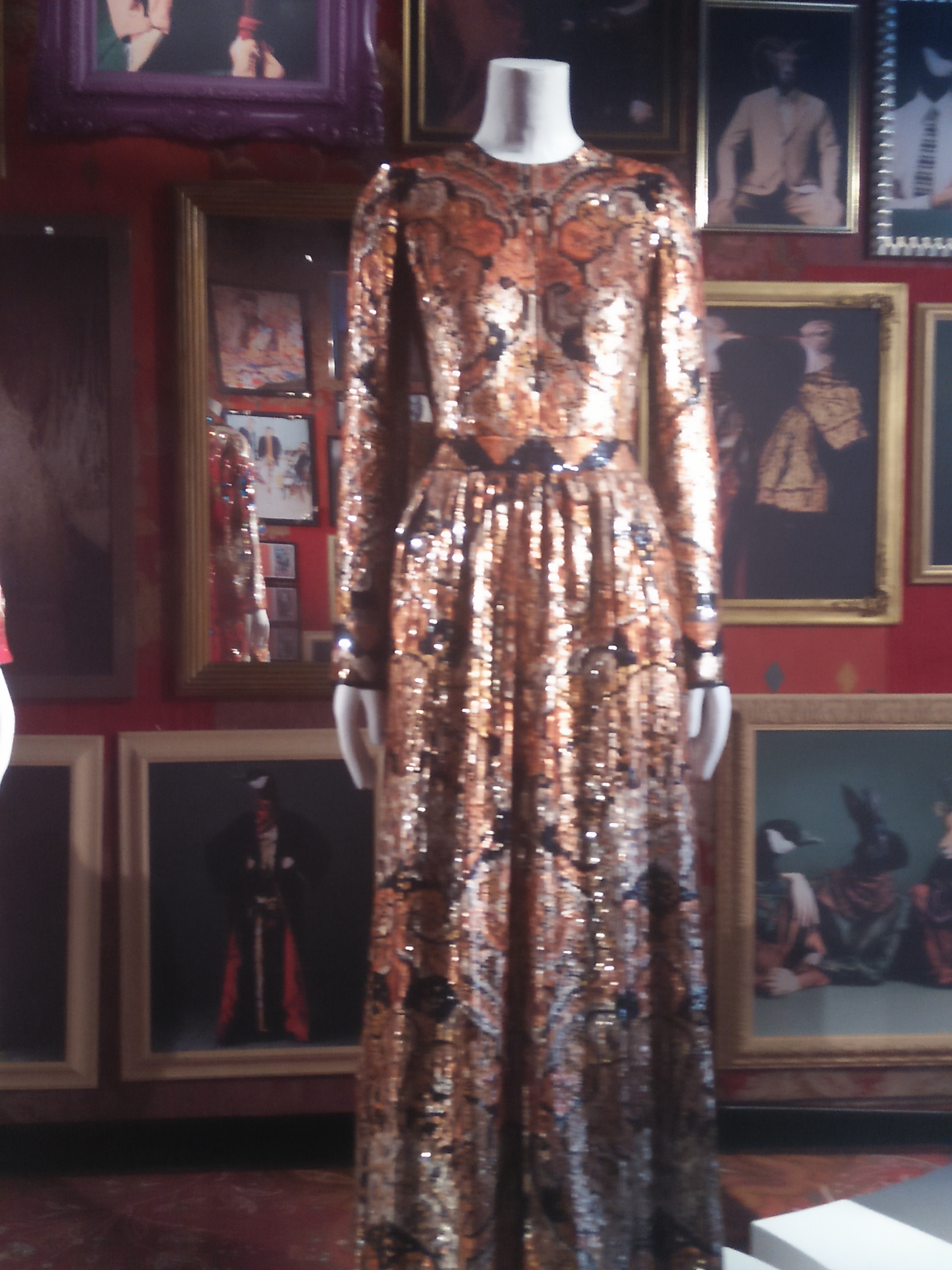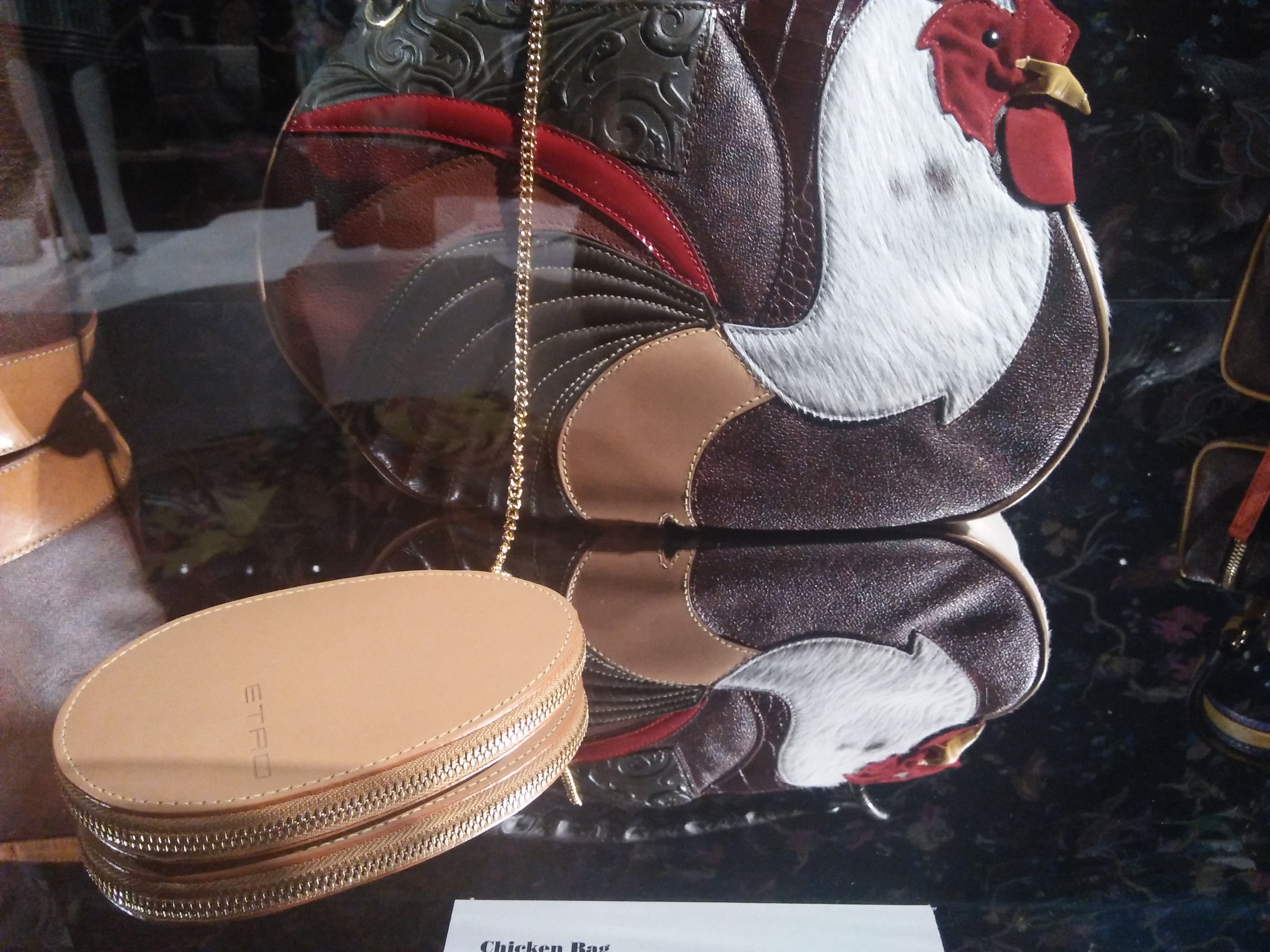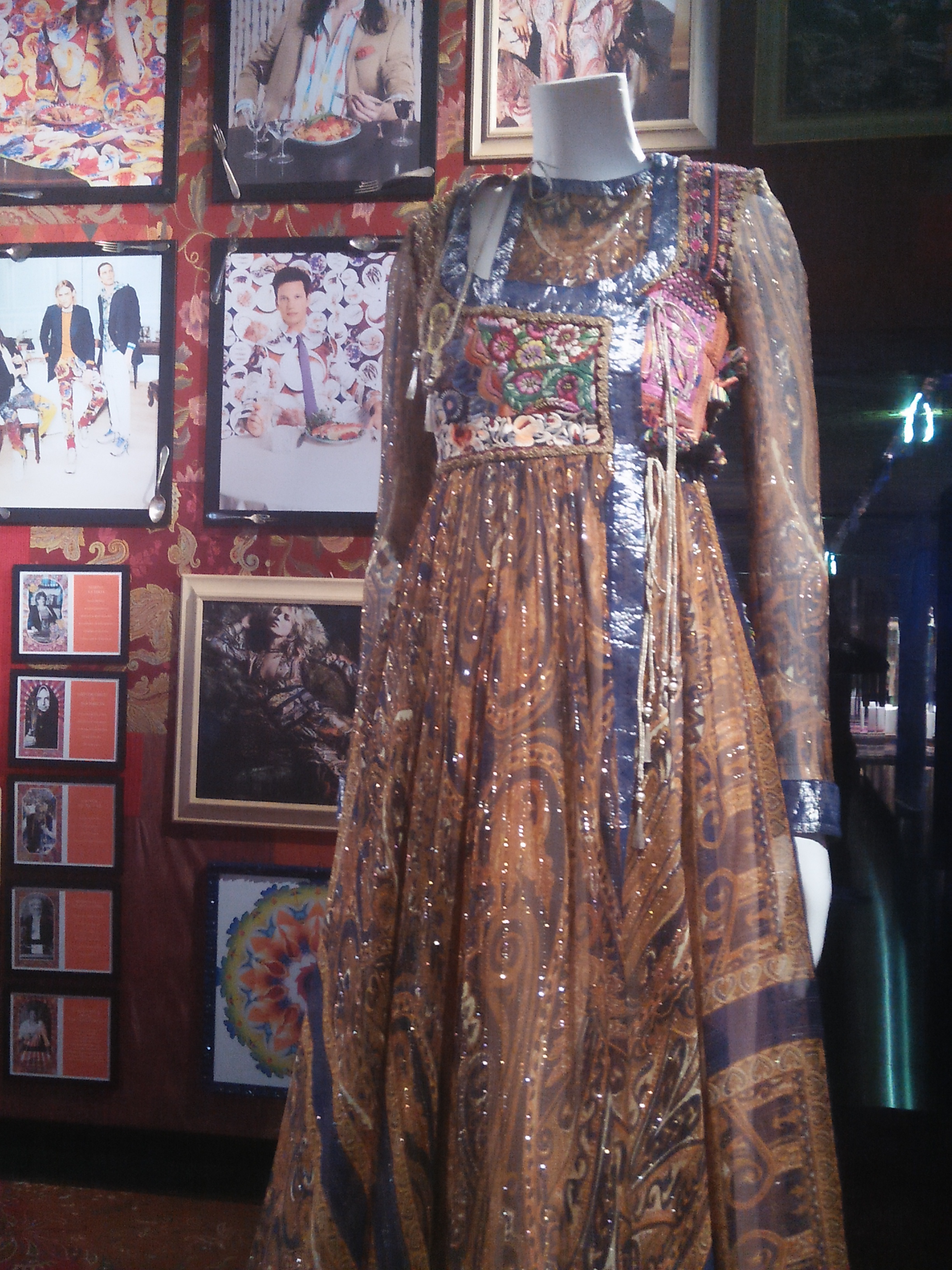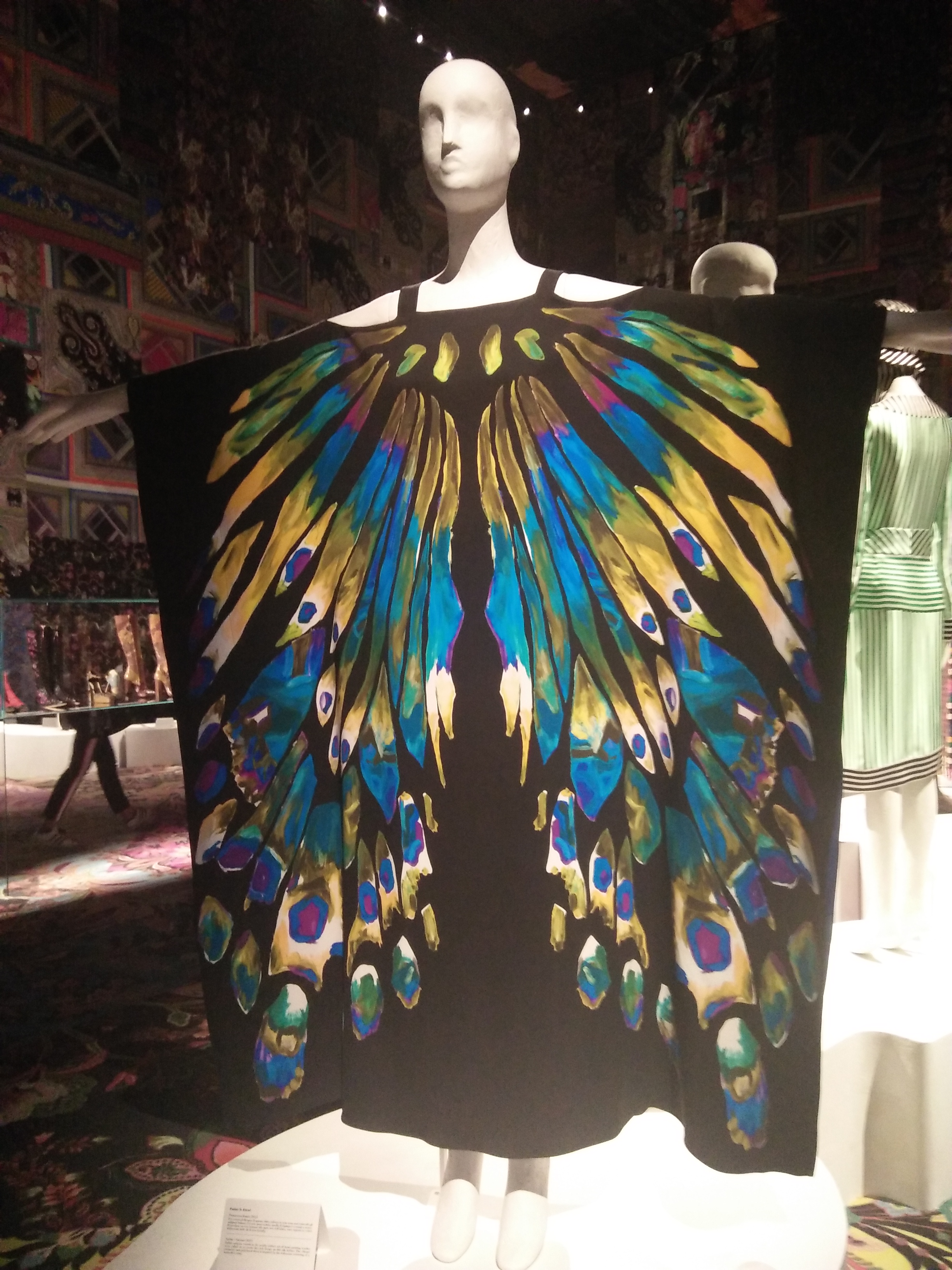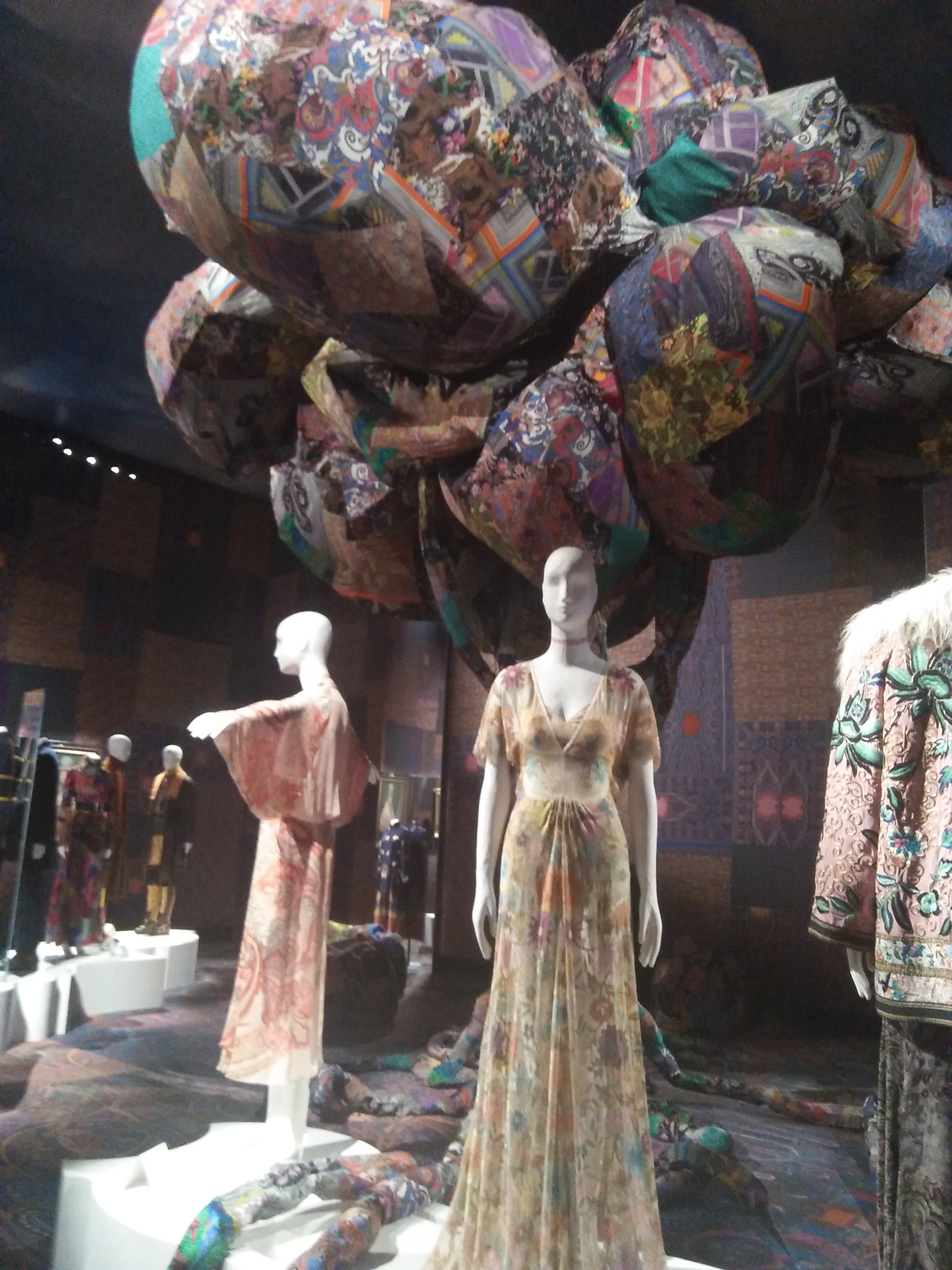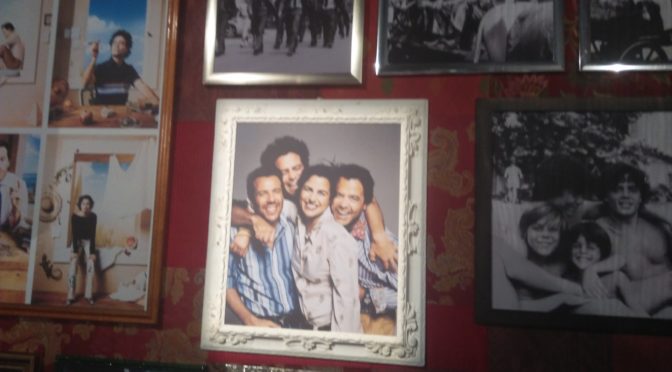Originally, there was an ancient land, Mesopotamia, the cradle of civilization, and a date palm bud, the ‘buta’, a symbol of fertility and long life. The ‘buta’ design began to be reproduced in Asia, particularly on Kashmir shawls and other fabrics, until it reached England between the 18th and 19th centuries, where it was renamed ‘Paisley’. Fifty years ago, the history of the Milan-based fashion house Etro blossomed from the Paisley: the portentous shoot turned into Etro’s own emblem. ‘Generation Paisley’ is the title of the marvellous exhibition that is being held at the Museum of Cultures in Milan (Mudec, 23 September – 14 October 2018) to celebrate Etro’s first half century of life. The exhibition is a journey through the multiple influences of the brand, to discover the evocative places and meetings that have inspired its masterpieces. We start from the large tree of the first room, a metaphor for the collection of shoots from which Etro draws the lifeblood of its creativity, and we get to the ramifications that extend from this symbolic tree into the next five rooms. The visitor here finds fifty enchanting outfits, both female and male, as well as a variety of accessories and perfumes.
Our ESE Milan students were also transported among Etro’s colours and fragrances: under the guidance of design lecturer Donatella Lorato, they visited the exhibition last Monday, October 8th. Bekshi, who is attending a short course in Management at ESE, told us about her personal impression on ‘Generation Paisley’. Born and raised in Sri Lanka, Bekshi didn’t know Etro before going to Mudec and was immediately fascinated by the class and the colourful splendour of the brand’s clothes and accessories. As she observed Etro’s masterpieces, Bekshi was reminded of the Indian brand Sabyasachi, which is specialised in the production of traditional wedding dresses, and was able to grasp the similarities and differences between the two production houses, both in the use of colours and the quality of the fabrics. Etro has an intuition and a creative boldness that Bekshi had never seen before: between a scarf depicting a plate of spaghetti and a hen-shaped bag, our student could reflect on the versatility of the stimuli that make Etro a brand as eccentric as it is revolutionary. The selling store at the end of the show has instead struck her because it demonstrates the excellent marketing strategy behind any events organized by an excellent production company.
Vivienne, our Austrian student of the short course in Fashion Management and Luxury Goods, has also suffered the spell of Etro’s extravagance. Of the exhibition she has appreciated in particular the furniture – as she tells us, the walls are upholstered with fabrics decorated with different patterns, including (obviously!) the signature Paisley – and the audio-visual support, especially the fashion shows’ videos dating from the 70s to today, a useful source to trace the brand’s stylistic evolution through the decades. The tree in the first room instead fascinated Vivienne for its symbolic value. She read it as a metaphor of the Etro family’s genealogical tree. Each branch of the tree can in fact represent the peculiar artistic vision of every single member of the Etro family, a vision that is inextricably intertwined with that of the other members. Since 1968, the Etro brand has after all been a family business: the four sons of the founder Girolamo (called ‘Gimmo’, now 77 years old) still hold the reins of the brand’s administration and production.
The enthusiasm of Bekshi, Vivienne and their ESE fellows is more than justified. As the lecturer Donatella Lorato highlights, Etro is in fact an excellent case study to provide to the students. From an educational point of view, the importance of visiting the exhibition has constituted in having identified and understood the wealth of an Italian luxury brand, which is not always studied outside our national borders. The girls who visited the exhibition, all coming from foreign countries (both European and non-European), have discovered the heritage of a niche brand that has been surprising us for half a century. The refined anthropological research, the intuition, the coherence and, at the same time, the multiplicity of its inspirations make Etro a unique name, which bewitches and transports into new worlds. Behind every creation lies the charm of a curious research, the stratification of ideas, the elegant influences often given birth by the visionary encounter between the West and the East. We are very happy that ESE could make it to this unmissable cultural event.
Pietro Morlacchi
Photos: ESE Milan Students
